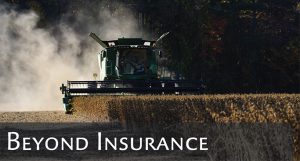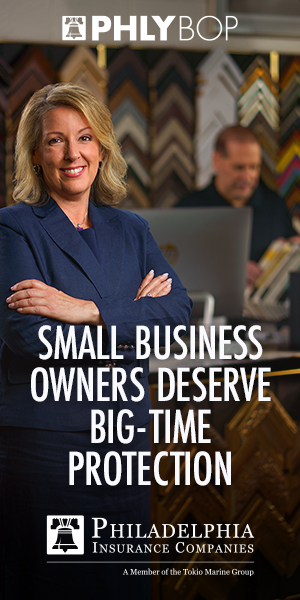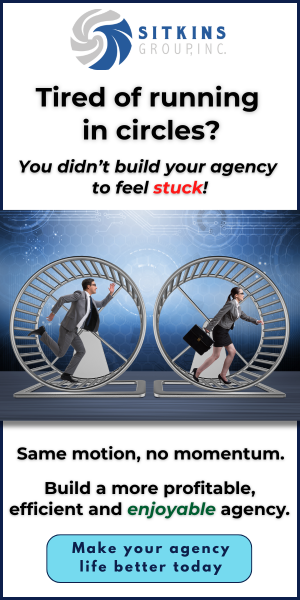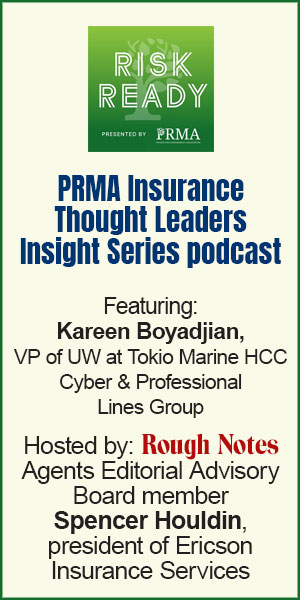 High-leverage moves to finish
High-leverage moves to finish
the year strong and “plant seeds” for a successful spring
If you’re not proactively checking in with your clients
before the year wraps, you’re leaving relationship capital—and likely revenue—on the table.
By Carolyn Smith, APR, TRA, CRA
October. Q4 is here, and the clock’s ticking. Successful professionals will continually focus on their development to ensure that their skills keep pace with the rate of change.
Now, some agents? They treat October like spooky season. They start easing up, convincing themselves that everyone’s too “busy” or “checked out” to talk about insurance and risk management. So, they wait. They drift. And then wonder in January why their pipeline’s dry.
But the smart ones—the ones playing the long game—know something different: October isn’t the end. It’s the edge of something bigger.
This is when you lock in your renewals, activate your best relationships, and turn satisfied clients into walking, talking referral machines. It’s when you stop being just a policy writer and start showing up as the trusted advisor—the one who gets invited in before the big decisions are made.
Let’s dig into a few simple, high-leverage moves that’ll not only finish your year strong but will also plant the seeds for a solid, successful spring.
- Now’s the time to ask—genuinely and intentionally.
This is the time of year when people naturally start reflecting. They’re grateful. They’re thinking about the people who’ve helped them. And that makes it the perfect time to connect.
You don’t need a fancy giveaway or some holiday gimmick. You just need to show up with authenticity—and a clear, simple ask.
Try something like this: “As the year winds down, I like to thank my clients by being available to those they care about. If someone in your circle could use the same kind of guidance I’ve provided for you, I’d be honored to talk with them.”
That’s it. No pressure. No weirdness. Just a friendly reminder that you’re here, and you’re willing to help. The truth is, the reason most clients don’t refer is not because they don’t want to, they just don’t think to and they forget. A little intentionality on your part can change that and turn one great relationship into three more.
Your job is to remind them. Make it easy. Even better? Pull out your phone and send a short video. Look right into the camera and speak like you would if they were sitting across from you. Not perfect. Just personal. Your face and your voice will do more than a thousand-word email ever could.
Cut through the noise. Be human. That’s how you turn gratitude into growth.
- Be crystal-clear about whom you want to meet.
Dan Dias, president of The Magnolia Agency in Massachusetts, puts it like this: “If your ask is vague, your results will be, too.”
You’ve probably heard someone say, “Let me know if you know anyone who needs insurance.” But Dan says that kind of ask is easy to ignore. It doesn’t give the other person’s brain anything to latch onto.
Instead, Dan recommends saying something like this: “I’m looking to connect with CFOs at companies doing between $10 million to $25 million in revenue—especially those without an in-house risk manager. If anyone like that comes to mind, I’d be grateful for an introduction.”
That kind of specificity unlocks results. Now their brain starts flipping through the right names. It feels natural, clear and actionable.
Dan’s approach works because it speaks their language and taps into their network in a thoughtful way. And if you can tie it to a short client success story or a common risk you’ve helped solve, even better. People remember stories. They share stories. And stories spark referrals far more effectively than features or generalities ever will.

3. Use October to plant speaking opportunities.
October isn’t just about finishing the year strong. It’s also prime time to plant seeds for spring conferences—especially if you want to stand out in a niche.
Take Clint Paskewitz, commercial risk director at Associated Insurance. He’s been working with a large client in a very specific industry—the kind of niche where everyone knows everyone. Clint didn’t ask for a favor; he just did his job exceptionally well.
His client, who sits on the board of that industry’s association, was so impressed that he referred Clint as a speaker for their fall conference.
Look what that one referral does:
- It establishes Clint as a go-to expert in the niche
- Clint’s client is speaking about what Clint did for him
- Clint is speaking on stage in front of dozens of ideal prospects
- The board member is publicly recommending Clint to the entire room
This is how you turn great work into a megaphone. No cold calls. No ads. Just strategy and timing.
So, ask yourself:
- What niche do you know better than most?
- What client could make an intro to their association?
- What conference could use a real-world case study with your name in it?
October is the time to start planting those speaking seeds. And it doesn’t take much more than a call or email that says: “You’ve mentioned how much this process has helped your business. If you ever think it’d benefit others in your association, I’d love to be a resource.”
You don’t need to be professional speaker. You just need to tell the truth about the good work you’re already doing.
- Referrals grow where relationships are planted.
Another story out of eastern North Carolina reminds us that referrals aren’t just about one-off intros—they can be the spark that ignites a whole new line of business.
It started with a simple service contract. A regional agricultural lender, AgCarolina Farm Credit, asked for help servicing their existing crop insurance accounts. Nothing fancy. No promises of growth. Just help managing what they already had. But here’s what happened next: Instead of just processing renewals, the Flatlands Jessup team got into the field. Literally. They talked to farmers. Listened. Cleaned up policies. And educated loan officers who’d never been taught how to structure coverage for modern operations.
What started as a back-end service job turned into something much bigger. Because once the farmers experienced that kind of hands-on partnership, they started talking. Referrals poured in, and the word got out that “these folks actually help.” Within a year, the crop book had doubled—not from marketing campaigns or cold calls, but from one-on-one referrals rooted in trust. The harvest came because the groundwork was honest.
By 2020, AgCarolina handed the full book over to Flatlands Jessup entirely. And by 2024, the Flatlands Jessup book (which encompasses the AgCarolina book) had grown to more than $8.7 million in commission revenue.
But even with all that growth, the team still walks the fields. Still answers the phone. Still focuses on one-on-one service. Why? Because that’s what keeps the referrals coming. The secret isn’t slick. It’s not even a secret. It’s showing up, delivering real value, and staying visible. And when you do that consistently, your clients won’t just refer you once. They’ll keep planting your name in the ears of everyone they care about.
- Tap the field you’ve already planted: Deepening relationships before year-end.
Jeff Zeagler, partner and risk advisor at McClure, Bomar & Harris, made a great point recently that’s especially relevant as we head into the last stretch of the year: Are you being brought in when decisions are being made—or after they’re already done? That one question can tell you everything about the strength of your relationship with a client.
Too many agents wait for renewals to trigger a conversation. Jeff’s approach is different, and it’s why it works. He sees himself as part of the client’s internal team, not an outsider—someone they call before they expand locations, take on a new vendor, or sign a major contract. And if you haven’t had those conversations with your current accounts yet, now’s the perfect time.
The fourth quarter is full of planning. Budgets. Forecasts. Strategic meetings. If you’re not proactively checking in with your clients before the year wraps, you’re leaving relationship capital—and likely revenue—on the table.
Most middle-market companies don’t have a risk manager. No one’s guiding those conversations. But you can. That’s how you turn an “insurance agent” relationship into an “advisor” relationship. And that’s how referrals and long-term loyalty are built.
Here’s your move: Go back to your book and pick five clients you haven’t talked to in a while. Reach out now—not with a quote, but with a question. Ask what they’re planning for next year. Ask what might be changing. Ask how you can help. You’ll be surprised how many doors open when you lead with curiosity instead of coverage.
Final word
October gives you a fork in the road. You can wind down with everybody else. Or you can work your book, make the ask, and position yourself for massive spring growth—just like Clint and Flatlands Jessup did.
Here’s the challenge:
- Call 10 clients
- Send three video referral asks
- Ask for three specific intros
- Reach out to two associations about speaking
So, this October? Let everyone else eat candy corn and wait for a new year. You? You’re going to harvest the fall.
The author
Carolyn Smith, APR, TRA, chief training officer for Beyond Insurance, creates and delivers transformative programs, including the Trusted Risk Advisor certification, BIGN Producer Boot Camp, and Quest for Success, that have positively impacted the lives and careers of countless professionals. These programs help industry professionals build a career that they love and achieve the success they deserve.




